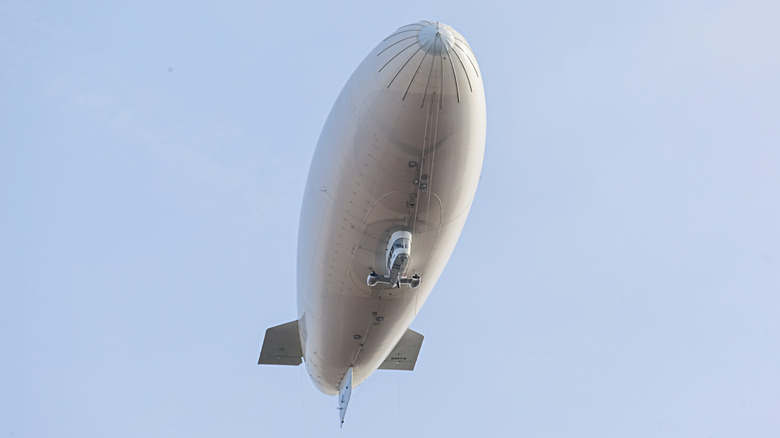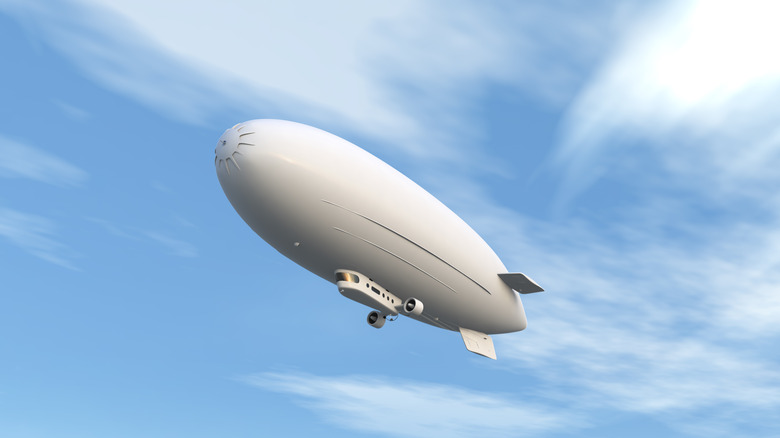Airships Might Make A Comeback. Here's Why You May Not Want To Fly On One
Despite the 1937 disaster wherein a hydrogen-powered German airship known as the Hindenburg exploded over New Jersey killing 36, dirigibles have remained in flight for over 170 years. Known also as blimps and zeppelins, these rigid airships use readily-available hydrogen or helium to take to the skies. And despite the Hindenburg's hydrogen mishap, these aircraft of the past have renewed interest as a more sustainable, less expensive form of aerial cargo and transport than their gasoline-guzzling jet and helicopter counterparts.
French company Flying Whales "claims its airships will produce less than 10% of the carbon emissions while operating," according to CNN. The biggest argument for any company hoping to get in on the airship game is going to be hydrogen or helium — the former is plentiful and more powerful while the latter isn't flammable and doesn't explode.
But as companies like Flying Whales, among others, explore the future of airship technology as a lower-emission, more environmentally-friendly form of transport, there is one major reason you might not want to book travel on one.
They're not the fastest for travel
Although the new generation of airships from companies like Flying Whale and LTA research is expected to be eco-friendly, it's not exactly going to be expedient. In short, blimps are slow. One offering from Britain's Hybrid Air Vehicles, the helium-powered Airlander 10, has a speed of around 92 miles per hour. Another company, a start-up called H2 Clipper, wants to take its next-generation hydrogen-powered airship to 150 mph with a prototype expected to start building in 2024.
By comparison, when it reaches the necessary cruising altitude, a passenger airliner typically flies around 575 mph. So while you would certainly travel faster in an airship than say your average highway road trip if you've got a long-distance journey, commercial flight on an airplane is still going to be your fastest bet. It's also unclear how airships would fit in with existing regulations for commercial aircraft.
Perhaps, however, the next generation of airships will find its foothold in tourism — much like taking a leisurely cruise ship in the sky.

